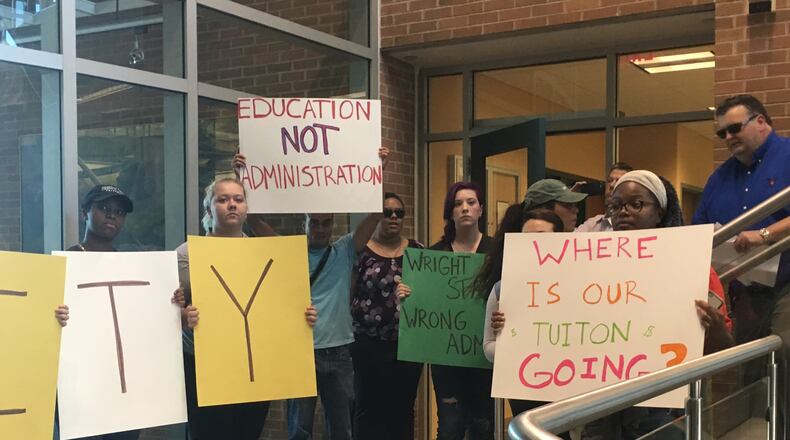Wright State’s spending decisions have been under a microscope for years, as recent controversies have cost the public university more than that $6 million – and counting.
Those include:
1. Visa fraud investigation
The Dayton Daily News I-Team reported in January 2017 that a federal investigation into whether WSU violated work visa laws had cost the school more than $2 million. A year later, the investigation is still going on and the school's former provost is approaching three years of being on paid administrative leave.
In addition, the investigation likely led to a decline in international students that cost the school millions more.
2. Presidential debate fail
Wright State spent $1.7 million preparing to host a presidential debate in the 2016 election that never happened, and spent another $2.6 million more in upgrades to the Nutter Center in preparation for the cancelled debate.
Plans for the debate collapsed about 10 weeks before the event when fundraising fell short and it ended up moving to Hofstra University.
The total cost of the debate debacle could go up. A consultant hired to help prepare for the event is suing the school for $2 million.
3. The rainmaker of Wright State
Former WSU President David Hopkins says Ron Wine Consulting Group was a successful partner to the school and helped bring in millions of dollars in state and federal research.
But an Ohio Inspector General's investigation concluded in December with a report questioning $1.8 million of the $2.3 million WSU paid Wine.
Timeline: Wright State’s controversial multi-million dollar consultant
Meanwhile Wine is suing the school for $4.5 million claiming he had a verbal contract with Hopkins obligating the school to pay him 5 percent of every dollar he helped bring in. Hopkins denies making such a deal, though at least one university administrator says Wine was paid under it.
4. WSU logo snafu
Wright State University spent $850,000 on a branding effort that included a new logo that it scrapped in mid-2016 amid criticisms.
The yearslong rebranding effort resulted in a logo that some said looked too similar to Rumpke Waste & Recycling and Intel, and that axed Wilbur Wright.
5. Student aid investigation
Wright State in November paid $1.98 million to settle a complaint brought by the U.S. Department of Education over how the school was handling student aid, the Dayton Daily News reported last month.
Wright State was unable to provide documentation showing that all the students it administered federal aid to actually attended classes prior to withdrawing from the university, according to WSU.
6. Research contracts lost millions
Underbilling for contracts and budget overruns cost Wright State more than $4 million in recent years, an audit by the private company Plante Moran found last year. Auditors also questioned the university's financial support for organizations with potential conflict of interest issues and that made large bonuses to executives
RELATED: Kasich’s office: WSU leadership was ‘cultivating a regime of secrecy’
WSU administrators say they have taken steps to address these issues.
7. Millions for president’s pay
Former WSU pnresident David Hopkins quietly resigned from the university last month after a tumultuous tenure.
Hopkins' compensation itself was at times controversial. In 2014, contract provisions put his pay over $1 million, eclipsing other public university presidents, our I-Team reported.
Hopkins was paid $854,220 in 2015 and $563,266 in 2016, according to the I-Team Payroll Project.
Hopkins was replaced as president by Cheryl Schrader, whose contract puts her salary at $425,000 and includes perks that could bring her total compensation to more than $680,000.

